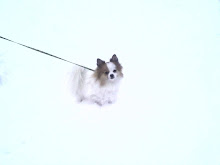CHALLENGE QUESTION!
If the area of one figure to another increased 81 times, how many times greater is the perimeter of this new, larger similar figure?
*Hint* Remember the 'rule' we discussed in class.
The lake is "reflecting" the clouds!

 source http://farm2.static.flickr.com/1258/813779861_48acd71741.jpg
source http://farm2.static.flickr.com/1258/813779861_48acd71741.jpg Symmetry in architecture!
 Where do you see symmetry in the world around you?
Where do you see symmetry in the world around you?
 You may not have recognized this, but many bike frames are built using triangles as the primary shape. Mountain bikes and BMX bikes take a lot of beating from their riders during trail riding and trick jumps, but the triangular frame provides the strength needed to support this force!
You may not have recognized this, but many bike frames are built using triangles as the primary shape. Mountain bikes and BMX bikes take a lot of beating from their riders during trail riding and trick jumps, but the triangular frame provides the strength needed to support this force! Share some examples of where you find triangles at use in the world around you. This may be in your home, school, searching on the Interent, etc.
Share some examples of where you find triangles at use in the world around you. This may be in your home, school, searching on the Interent, etc.



1. How many cups of mix would it take to make 50 pancakes? Show the proportion on your comment.
2. How many cups of water would it take to make 20 pancakes? Show the proportion on your comment.
**Challenge** How many pancakes did I make if I used exactly 4 cups of water?
If you forget how to solve a proportion, follow this example by Harrison!



























.jpg)
